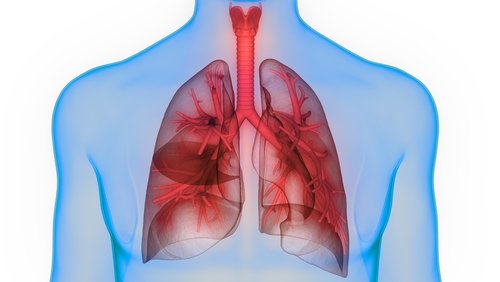Pulmonary Blood Flow Changes During Exercise Could Indicate Pulmonary Vascular Disease Progression, Study Finds

Scleroderma patients without pulmonary arterial hypertension (PAH) were found to develop a mild but significant decline in the ability to exercise and in pulmonary vascular function during exercise, according to a four-year prospective study published in the European Respiratory Journal.
Previous large-scale studies have demonstrated that PAH is a real and severe complication developed by 5-12% of patients who have scleroderma (SSc). PAH is associated with a poorer prognosis and is considered a primary cause of death among scleroderma patients. Therefore, it is critical that PAH-SSc is diagnosed early to allow timely therapeutic intervention.
Symptoms such as decreased carbon monoxide diffusion by the lungs and a reduced capacity to exhale higher volumes of air (called forced vital capacity) can be used as markers of PAH development. In addition, increased pulmonary arterial pressure during exercise — which could indicate a stiffening of the pulmonary arteries — also could be used to predict PAH development.
In the study titled, “Changes in pulmonary exercise haemodynamics in scleroderma: a 4-year prospective study,” researchers from the Medical University of Graz, in Austria, tested the usefulness of monitoring pulmonary hemodynamics (blood flow) in identifying the development of PAH in patients with SSc.
Researchers evaluated lung function capacity in 99 patients. Of those, follow-up was conducted of 58 patients for up to four years.
The team observed a significant increase in pulmonary arterial pressure and pulmonary vascular resistance during exercise. In addition, patients showed an overall decreased exercise capacity throughout the study period. These results are suggestive of the progression of pulmonary vascular disease.
Despite these observations, only three of the 99 participants were diagnosed with PAH.
During follow-up, researchers also observed a mild but significant decrease in peak oxygen uptake and an increase in NT-proBNP (N-terminal pro-brain natriuretic peptide), a recognized prognostic factor for PAH-SSc development. These results further suggest progression of pulmonary vascular disease and cardiac dysfunction.
“In conclusion, patients with systemic sclerosis developed mild deterioration of pulmonary exercise hemodynamics and exercise capacity over a 4-year follow-up period, indicating mild but significant progression of pulmonary vascular disease,” the researchers wrote.
Further studies are required to determine if patients with SSc who present changes in pulmonary function during exercise would benefit from early PAH therapies.






